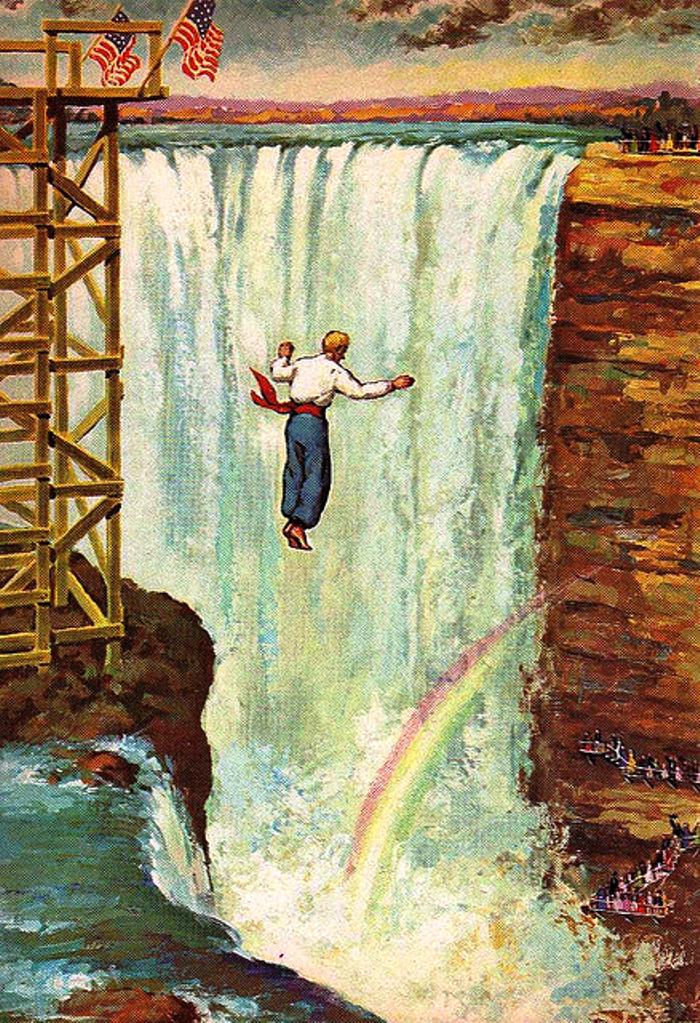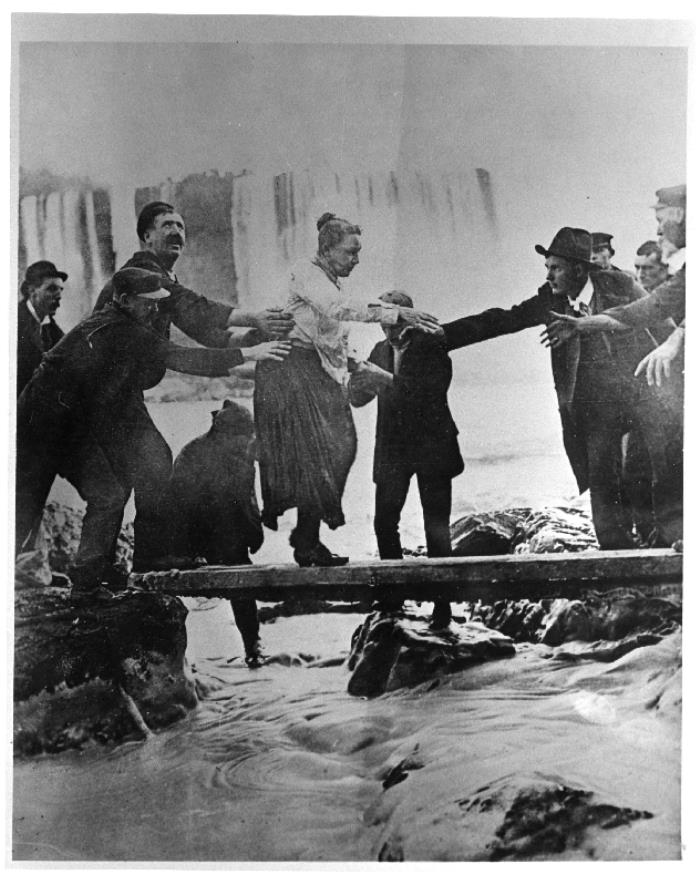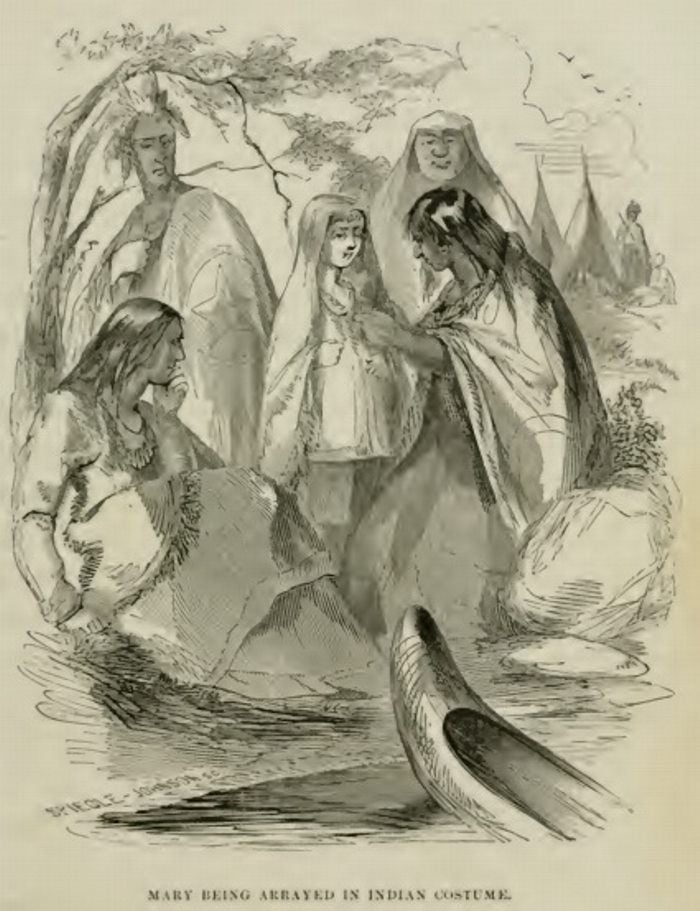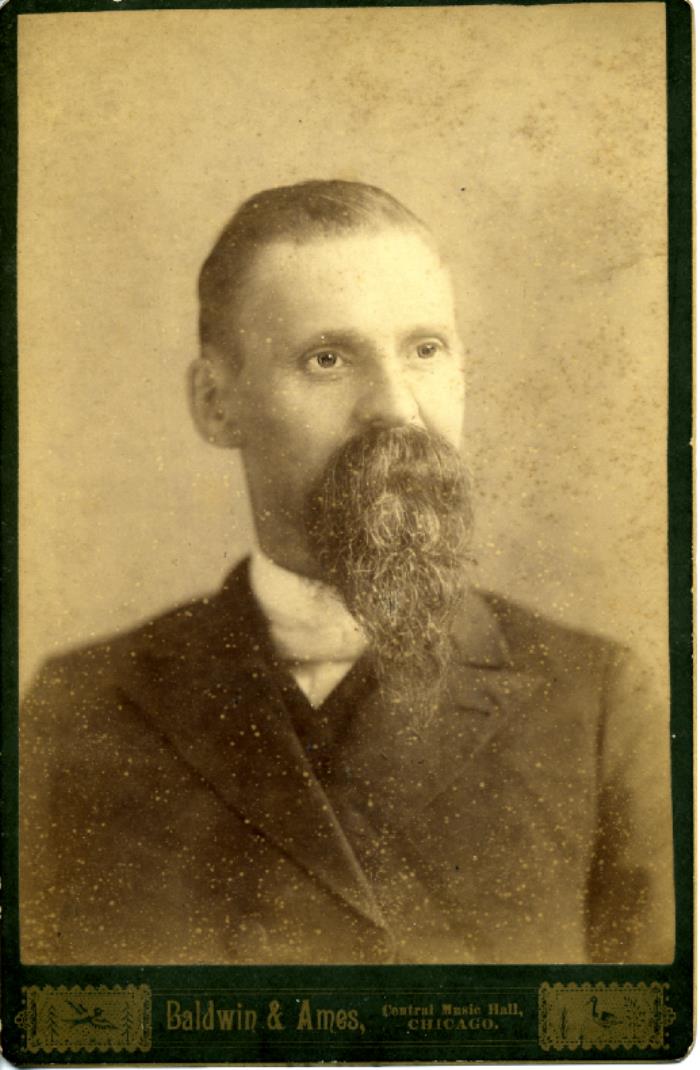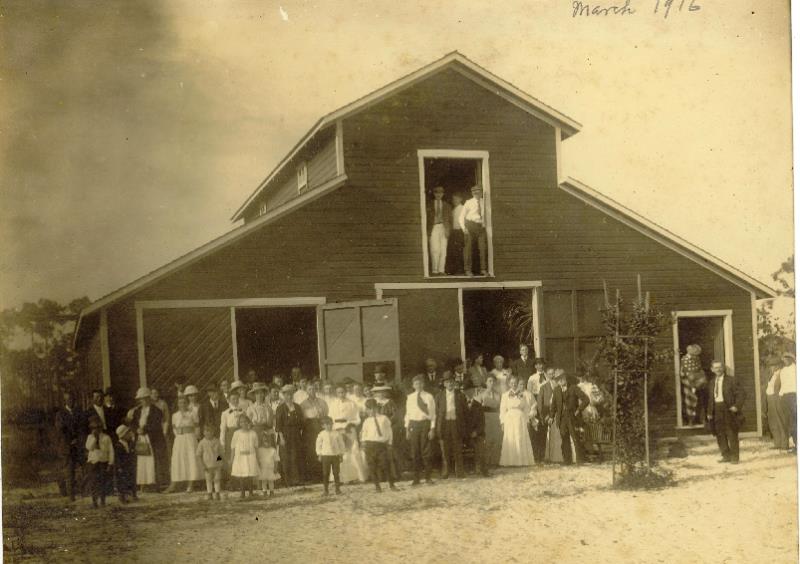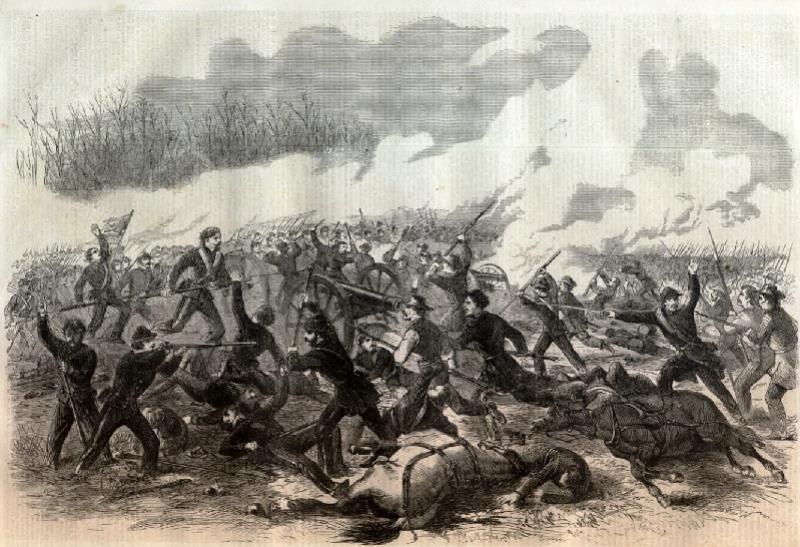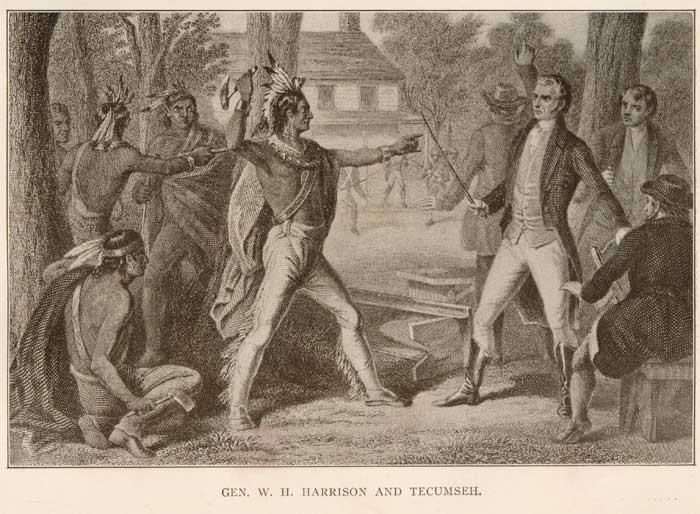Whether standing up for their rights or jumping off Niagara Falls in a barrel, these folk heroes lived their lives to the fullest.
American Folk Heroes: Sam Patch
Before Evel Knievel was a twinkle in his father’s eye, Sam Patch was thrilling audiences across America. As a child laborer in Pawtucket, Rhode Island, Patch would entertain his friends by jumping off the mill dam. By 1827, now living in New Jersey, his increasingly higher jumps had started to attract large crowds. Wanting something more than the life of a mill worker, the 22-year-old Patch began a jumping tour across the then 24-state Union.
“Sam Patch the Yankee Jumper” quickly became a household name, placing him among America’s great folk heroes, and his catchphrase “Some things can be done as well as others” become popular among his fans. A whopping ten-thousand people came to watch him jump 125 feet from a cliff near the base of Niagara Falls. Shortly after, another eight-thousand came to Rochester, New York to watch him jump the 99 foot Genesee Falls.
Tragically, Patch died attempting to one-up his jump into the Genesee a week later. Though he normally pencil dived feet first, Patch lost his balance and smacked sideways into the water. His biography inspired poems, stories, and series of plays, and even touched President Andrew Jackson, who named his horse after America’s first infamous daredevil.
Joshua Norton
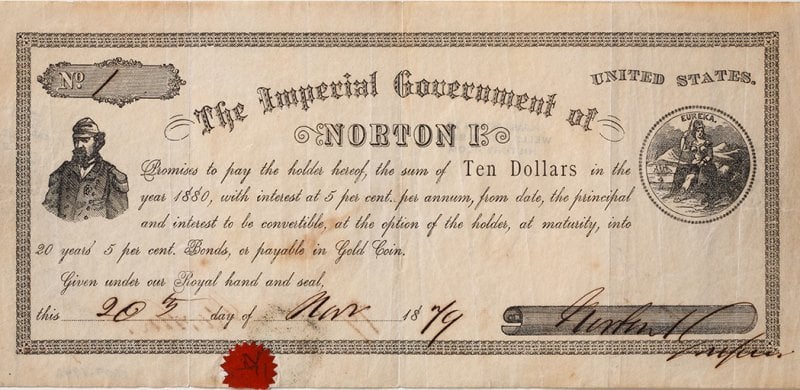
Either a visionary performance artist or severely deranged, Joshua Norton earned extraordinary local fame in San Francisco when he declared himself Emperor of the United States. Initially a shrewd and successful businessman, Norton went bankrupt on a poorly timed investment. After mysteriously disappearing following the loss of his fortune, Norton returned to San Francisco clearly disgruntled and unstable.
On September 17th, 1859, he issued his proclamation to every newspaper that he was seizing control of the whole country. It was printed for humorous effect, but Norton became an instant celebrity across the city. For the rest of his life, newspapers eagerly awaited his next proclamation, and even fabricated several. Some of Norton’s authentic proclamations hint at a prophetic genius, calling for bridges and tunnels connecting Oakland and San Francisco, a body resembling the League of Nations, and religious tolerance.
Despite his total destitution, Norton regularly dined at the best restaurants and had reserved seats at every performance hall. He printed his own money, which merchants regularly accepted. Following public outcry over his arrest attempting to have him committed, Norton was freed and the arresting officer forced to apologize. He was thereafter saluted by every policeman in the city and became one of America’s great folk heroes.
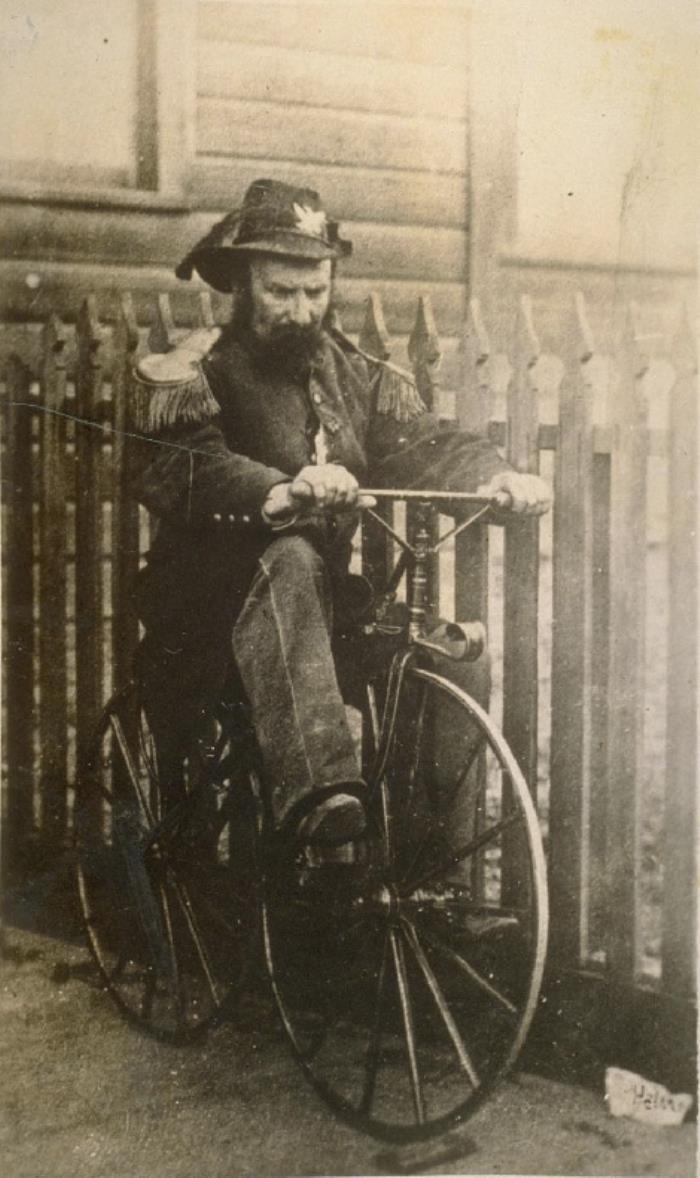
Norton Died in poverty, collapsing on the street early in 1880. In his apartment was fake correspondence to and from international royalty and fictitious treasury bonds at 7% interest. City businesses organized a funeral fund and Norton was buried in a rosewood casket after a two-mile procession, silently watched by an estimated 30,000 mourning subjects.
Annie Taylor
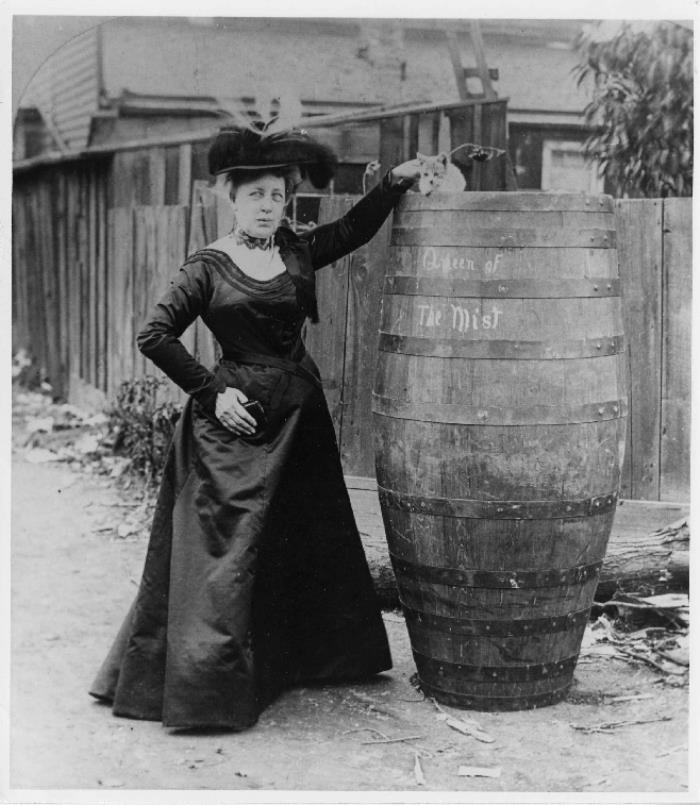
For decades, the Holy Grail of American daredevil folk heroes was a successful tumble over Niagara Falls. On October 24th, 1901, Niagara was conquered by a 63-year-old teacher. Widowed and her only child dead, Annie Taylor was desperate to avoid the poor house. After reading about tightrope walkers over Niagara Falls, Taylor hatched a plan to attract fame and fortune.
With tens of thousands of witnesses, she was nailed into her barrel and sent over the falls. Twenty minutes after she dropped, she was found and freed to deafening applause. Fame followed quickly for “the Queen of the Mist,” but fortune was never to be found.
Though she briefly made a living talking about her feat, her manager ran off with the barrel. She lost all of her money trying to get it back and never managed to secure it. Tragically, she died in the poor house she beat death avoiding.
Mary Jemison
Mary Jemison was born to Irish immigrants en route to the American Colonies in 1743. The French and Indian War began not long after they arrived, and her family was captured and killed by Shawnee and French raiders. She was sold to two Seneca who adopted her and renamed her Dehgewanus, meaning “pretty girl.”
Jemison lived a relatively tranquil life, though she and her tribe were constantly at odds with expanding colonists. The Seneca would fight alongside the British during the American Revolution and Jemison herself aided in efforts to limit American expansion.
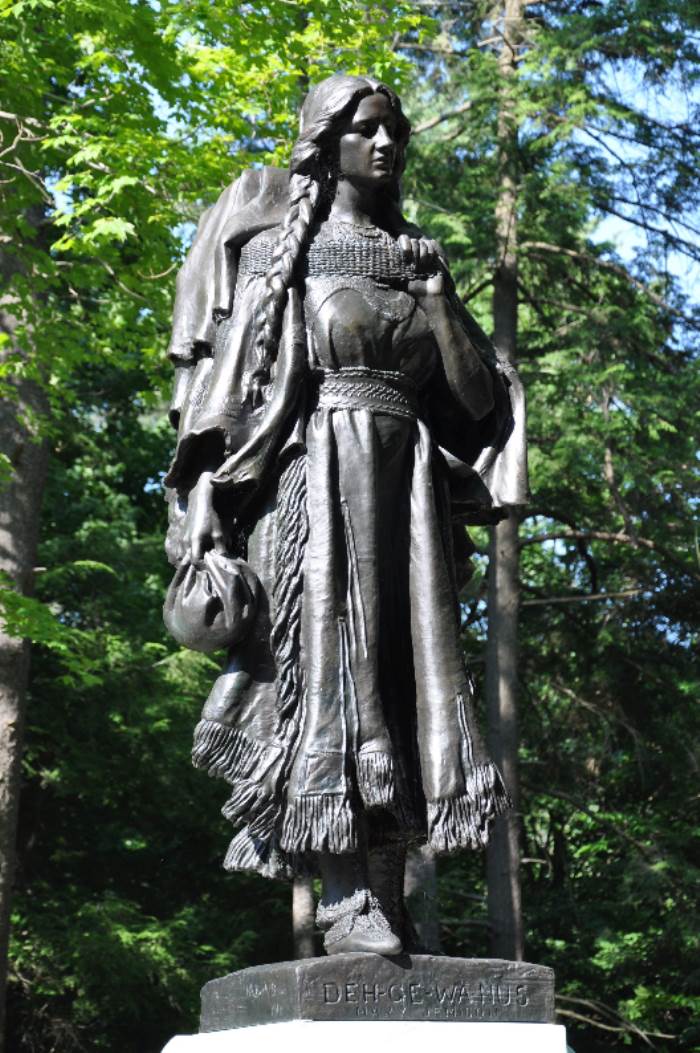
Source: Bristol Wood
In the subsequent defeat and relocation of native tribes, Jemison was able to negotiate favorable terms for the sale of their land. In 1823, the Seneca sold all but two acres of land, which was reserved specifically for Jemison. She sold it in 1831 to live out the rest of her days with her adopted brethern. Jemison, one of American history’s most fascinating folk heroes, died two years later at the age of 90.
American Folk Heroes: Cyrus Teed
Cyrus Teed was conducting an alchemy experiment when he was severely shocked by his equipment. While he was passed out and twitching on the floor, Teed claimed he was visited by a divine spirit who told him he was the messiah. When he awoke, he vowed to redeem humanity through science. Logically, he promptly changed his name to Koresh and began preaching Hollow Earth Theory.
Calling it “cellular cosmogony,” Koresh believed that life was contained within the earth, and gravity was illusion created by centrifugal force. During the 1870’s, Teed convinced enough people to form Koreshanity, which preached celibacy, communism, and Hollow Earth Theory. After jumping from New York to Chicago, the handful of Koreshans finally settled in Estero, Florida in 1894.
Estero had a power plant and printing press, and was extensively landscaped with imported plants. Though the commune enjoyed a few years of prosperity, it only ever grew a few hundred strong. During an altercation with some locals, Koresh was severely pistol whipped. He never recovered from his injuries, and died two years later in 1908.
Gideon Pillow
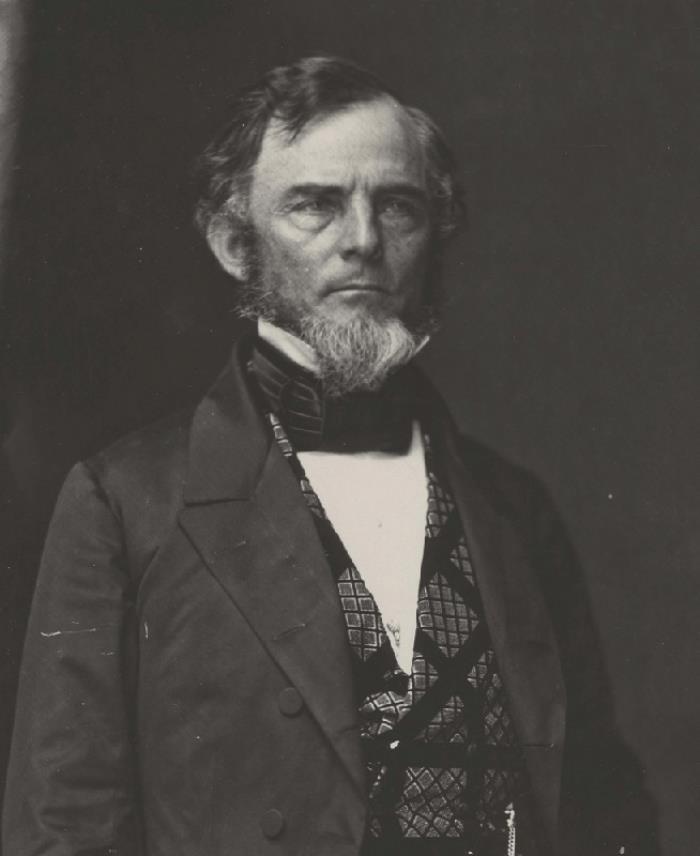
Source: Wikimedia Commons
Pillow joined the United States Army in 1846 as a brigadier general during the Mexican War. President Polk promoted him to major general less than a year later, but he quickly made enemies with General Winfield Scott. The following September, he penned an anonymous letter published in the New Orleans Delta, claiming credit for Scott’s recent victories. Pillow was arrested by Scott and court marshaled, but intervention by Polk and a friend’s false confession resulted in a relatively easy discharge.
After the start of the Civil War, Pillow, a native Tennesseean, was appointed brigadier general in the Confederate Army. His first battle was against the newly appointed Ulysses S. Grant, and resulted in a slim victory for the Confederacy. Following a brief resignation, Pillow was stationed at the crucial Fort Donelson with three other brigadier generals.
In February 1862, Union forces lay siege to Fort Donelson. Without permission from the commanding officer, Pillow had his left wing attack Grant’s army to clear an escape route. Initially successful, Pillow inexplicably pulled his troops back to prepare for their escape, yielding all their gains. The mistake was costly, and the next morning, the army surrendered the fort.
After his suspension for incompetence, Pillow was placed as an officer under John C. Breckenridge during Stones River. Breckenridge found him hiding behind a tree. Pillow would never receive combat orders again.
Forgotten American Cult Heroes: Tecumseh
When his father was murdered by pioneers ignoring a recent treaty, young Shawnee Tecumseh vowed to fight against American expansion until the end of his life. Siding with the British during the American Revolution, Tecumseh led raids on supply boats running through the Ohio River. He was only 15.
Following what he believed to be the illegal swindling of Shawnee land, Tecumseh reoriented his life to stopping the westward expansion of America. He traveled from tribe to tribe, recruiting warriors and leaders in his goal to establish a sovereign Native American nation. Conflicts between Tecumseh and America bled into the War of 1812.
Tecumseh and his confederacy of native tribesmen allied with Britain and joined in the Canadian campaign. He joined in the Siege of Detroit and was offered a commanding role in the British Army for his success. British support for Tecumseh’s reclamation of lands fell apart as momentum swung towards American forces. Tecumseh was killed October 5th 1813 in the Battle of the Thames, succumbing to a gunshot to the chest.
After this look at American folk heroes, read more about Annie Edson Taylor and Emperor Norton. Then, have a look at the ten most iconic Wild West figures.
